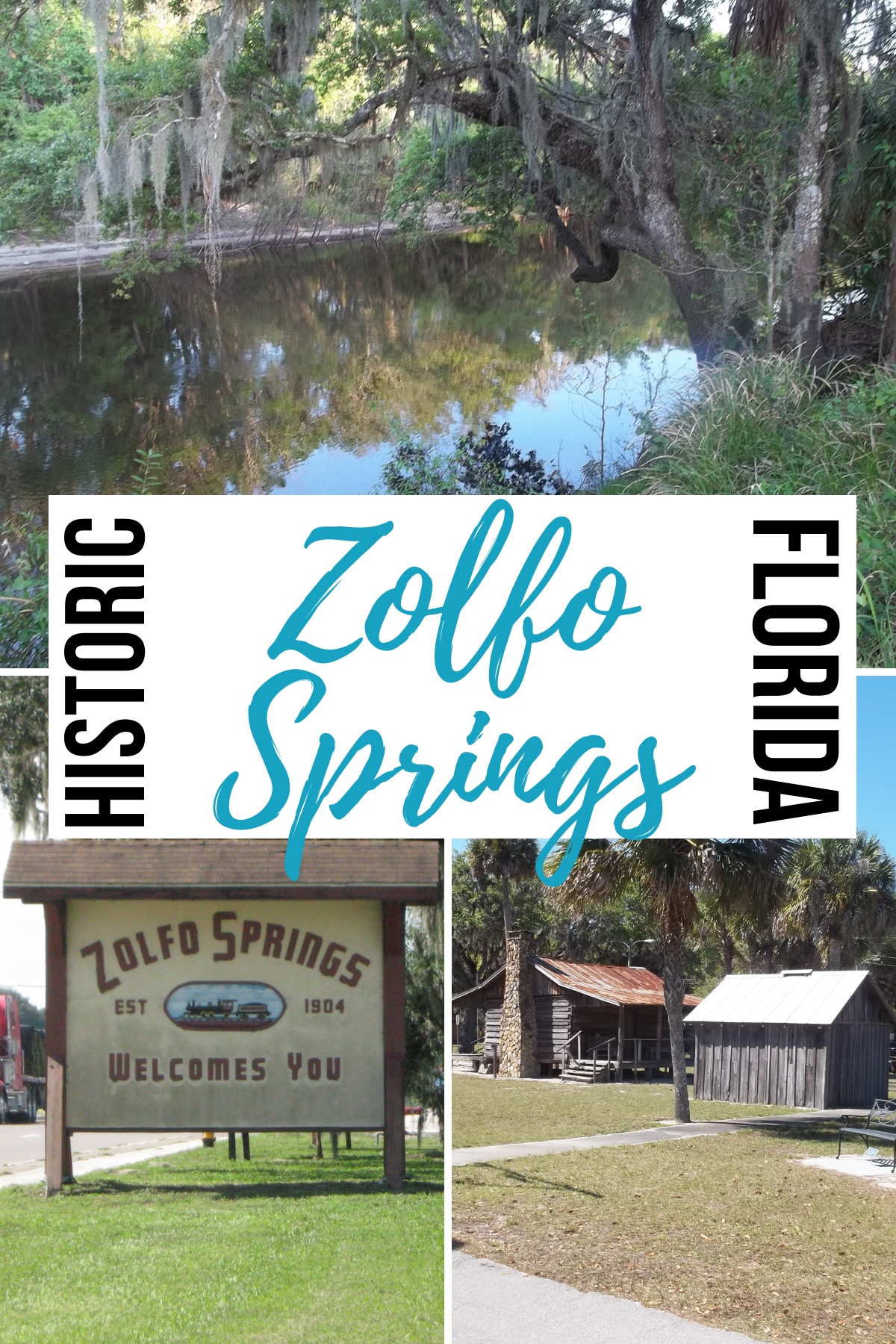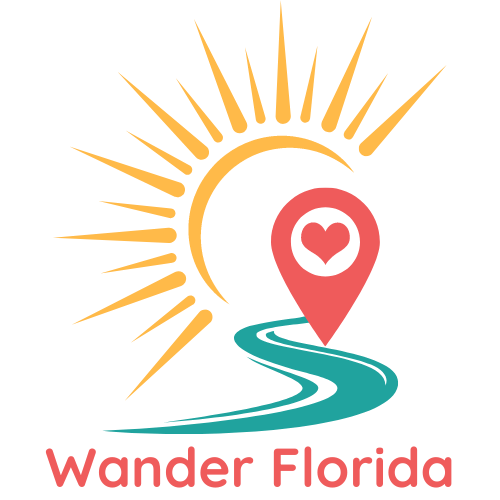The Unique History of Zolfo Springs Florida
Zolfo Springs. I had seen the name on maps many times. I had seen it on I-75 even more often. However, like many other people, I zipped right past without a thought for the town or its unique history. We changed that one spring Saturday.
Wander Florida is fully reader-supported. For that reason, this article may contain affiliate links. If you make a purchase through one of the affiliate links, I may earn a small commission at no additional cost to you. This revenue helps keep Wander Florida free and updated. I only recommend products or services that I would use myself. Read the full disclosure here.
Nick and I woke early on that Saturday morning, ran through the McDonald’s drive-thru for sausage biscuits, milk, and coffee. The deal: he would ride along for my day of exploring, and I would allow him navigation rights. We pulled to the light before Highway 19, and I asked for the first time, “Right or left?” He pointed right, out his window, so I steered Scarlett O’Jetta on to the on-ramp and headed south.
A Road Trip to Zolfo Springs
A few directions later, we aimed south on I-275. As we neared the Sunshine Skyway Bridge, we saw several kite surfers enjoying the unseasonably windy day. Of course, we pulled over and watched for a bit.

Back in the car and across the biggest suspension bridge on the East Coast, we soon met up with I-75. A sign announced upcoming towns: Bradenton, which we had visited a few months before; Zolfo Springs; and Wauchula. Nick immediately latched on to the word “springs” and chose the exit for Zolfo Springs. We turned left off the expressway towards the east and eagerly looked forward to what we thought would be a small town with a cool spring. We were only half right.
Though it’s an easy road trip from Tampa, Zolfo Springs turned out to be further inland than we thought. Thirty minutes after leaving I-75, Nick was already stuck in the “how much further?” loop.
We passed by mile after mile of cow pasture, some with dilapidated barns leaning drunkenly near fence lines. Periodic driveways marked the existence of farmsteads.
Bored by the flat scenery, Nick finally fell asleep. I, on the other hand, enjoyed the backdrop of farms around us while I drove on to our destination through the beat of alternative rock.

The speed limit on the two-lane Highway 64 slowed from 55 to 40 quickly. Trees replaced pasture fencing at the side of the road, and the driveways came closer together and more quickly. We had arrived in Zolfo Springs, a small, nearly forgotten town with a unique history. From what we know, the history of Zolfo Springs may have started something like the following.
Before Zolfo Springs
The river meandered through flat and sandy lands covered in palm trees and saw palmettos, sharp-edged grasses licking at the river’s edge like the deer that waded through the grasses cautiously to sip its cool waters. Purple flowers adorned tall stalks. Oaks struggled to find purchase along limestone banks, their shade turning the river navy where it blocked the sun.
Voices and laughter beyond a bend in the river silenced birds and drew cautious heads up. The deer retreated from the bank’s edge. Across the river, an alligator slid into the water. The voices grew closer, a mix of Spanish and Italian, just before a small v-hulled river boat rounded the bend. One man on the bow held a long pole. Behind him, a small cabin puffed smoke as the steam engine pushed the boat along the river’s current. Other men’s eyes peered at the empty river banks. The last Seminole Indian had been chased away from these parts decades earlier. What the men searched for now was river pebble, a loose aggregate that held the phosphate they mined. To the north, they found phosphate in hard rock, but here, along the “Great Sandy Ridge”, miners found it in rivers, the same ones that held thousands of fossils.
At every creek, the small boat turned to explore the new waterway. Sometimes the creeks ran shallow quickly, and the men explored on foot. Other times, the creeks narrowed and remained deep, but the reach between tree branches overhead clogged the air, making the waterway impassable. And still other creeks ended within a few hundred yards. Those short offshoots often held springs, fresh cool water bubbling from far underground, the surrounding water such crystal clear blue that the sandy bottom was as visible as if looking through a window.
Mining History Near Zolfo Springs
It was at one of these short offshoots that an Italian miner exclaimed, “Zolfo!”- sulfur in Italian. The exclamation stuck as place name a decade later when homesteaders settled there. These miners chased a natural resource found throughout much of Florida.
Phosphate comes from sediment that layered on the seafloor. At one time, Florida was that seafloor. The phosphate-rich sediments likely formed from phosphate in the seawater as well as fossils and waste from living sea creatures. The mineral is still mined in parts of Florida.

Pre-Settlement History of Zolfo Springs
Two decades earlier, the area around the Peace River from Fort Meade south saw fighting between militiamen and the Seminole Indians in the Third Seminole War. The Army built Fort Chokonikla at present-day Paynes Creek State Park eleven miles north of where Zolfo Springs eventually sprang up. The Seminoles never attacked the fort, and the Army decommissioned it years later. Settlers eventually used the materials from the fort on their homesteads.
We have rough dates for the occurrences near Zolfo Springs thanks to written records and maps. The last Seminole Indian War ended in approximately 1858, though periodic skirmishes continued to happen far south in what we know today as Big Cypress and the Everglades.
A map of the area dated 1875 does not yet show Zolfo, so it is unlikely the miners had passed through yet. A map dated 1887 shows a settlement named “Zolfo Springs or Zolfo”.
The Mahan family first homesteaded at the present-day town site around 1877. David Mahan later sold some of his land to Dr. Arnold from Fort Meade. While other towns memorialize their homestead families in building and street names, the names Mahan and Arnold appear largely absent in Zolfo Springs.

The town gained its first post office in 1886 and grew quickly after that, with a stop along the southern Atlantic Railroad. Since then, it has grown at a leisurely pace from less than 200 people in 1900 to just under 2000 in 2014. After the railroad came through town, Zolfo Springs had its own version of boom years. The first store was established in 1886, the same year as the railroad and post office. The 1890s were a rapid time of construction with the addition of a Methodist church, a school, and a newspaper.

Gateway to Prosperity
The town was incorporated in 1904 at which time it officially became Zolfo Springs. An article in the Florida Times-Union from 1889 noted that orange growing was the principal business in Zolfo, as it was in many of Florida’s oldest towns, and also reported that a phosphate mine works was established across the Peace River from the town. The phosphate company owned a small steamer to haul two barges.
Some years, when the winter and spring have been particularly dry, it’s difficult to imagine the water was ever deep enough to float barges. An article from 1914 in the Tampa Morning Tribune called Zolfo Springs a “Gateway to Prosperity”. (See both articles here.) The town never gained the amount of prosperity predicted.
In the 1920s, several businesses closed, including the town bank and newspaper. The phosphate company eventually moved on, and the railroad ceased service, putting a final nail in Zolfo’s dreams of prosperity.

An article from 1963 says the spring was a favorite swimming hole. The townspeople created a swimming pool in the spring in the 1930s and used it as a place for the town to have picnics and cool off in the summer.
According to Springfever.com, the spring was likely a 3rd magnitude (flowed at a rate of up to 10 cubic feet per second). Sadly, it was concreted over in the 1960s. Water no longer flows at this spring, the water dried up or possibly seeping through nearby limestone into the Peace River, the swimming pool dry and overgrown.
Today the town serves visitors who mine the Peace River for fossils or spend a day kayaking and canoeing. Several campgrounds service these weekend visitors, host fossil hunting tours, and rent kayaks. Pioneer Park, a Hardee county park, hosts several special events. Fishing is also a popular pastime. For Zolfo Springs, though, most people zip by on Highway 17, never stopping to learn the town’s unique history.
Let’s Connect!
Follow us on Facebook, YouTube, and TikTok. Also, please check out my Facebook group, Florida Travel Tips & Secret Spots, to get travel tips, discounts, secret spots, and hidden gems.
Did you know you can grab one of my photos for your home or office? Visit my Etsy shop to see what’s available right now! And thank you for your support!
Travel Resources:
These are the places I first go when planning or booking travel. They ARE affiliate links so if you use one I may earn a small commission (at no cost to you) and (bonus!) it’ll help me keep running this site. Visit my travel resources page to see all of the services and gear I recommend.
Flights: We always check flight prices and information on Way Away first.
Hotels: We use Expedia to compare and book hotels. We also love Booking.com for boutique hotels and B&Bs.
Vacation Rentals: For vacation rentals and other non-traditional lodging options, VRBO is our go-to.
Tours & Tickets: We use Viator for private tours and unique experiences.
Rental Cars: Though we prefer to experience a city through its public transportation, there are times when a rental car is needed and in those instances, we use Discover Cars.
Travel Insurance: No one wants to need it, but it’s great to have when you do. VisitorsCoverage is our go-to provider.






Engine, tractor, flywheel, flea market, food vendors, show in winter.
wow your pictures are incredible. There is definitely no place like Florida!
Thanks, Shawn.
I dont know very much about this place. Earlier I read a blog about this place but now I feel like I dont want to miss this place. Would love to visit this place asap
It’s a lovely place!
I love the idea of just wandering and seeing where the day takes you. You write so vividly I feel like I got to visit Zolfo Springs. I love all the history and details you found out about the town. I think we’ll have to do a trip or two like this over the summer.
I have never even heard of Zolfo Springs but now I want to check it out!
This look like beautiful country and I sure would like to bring the family to see it all.
Thanks for writing this detailed article about Zolfo Springs! It’s a little sad that the town didn’t get the chance to prosper, but at least, we know a little history about it now.
Awesome! What part of Florida are you headed to?
Agreed! I’m looking forward to going back before the rainy season starts and try to find some fossil teeth. Megalodon and mammoth teeth are sometimes found!
I love road trips and even more the nature that comes with it. The bodies of water make me think heavy of Crocs tho 😁 thanks for sharing!
Hahaha! I did have an eye out for the gators! The water was really shallow though so we didn’t see any.
There’s really much to know about Zolfo Springs from your post. Thank you.